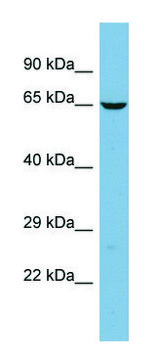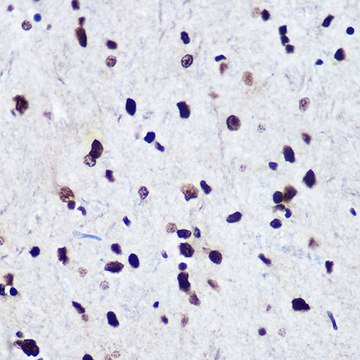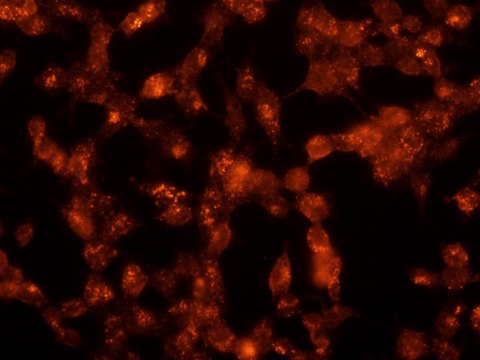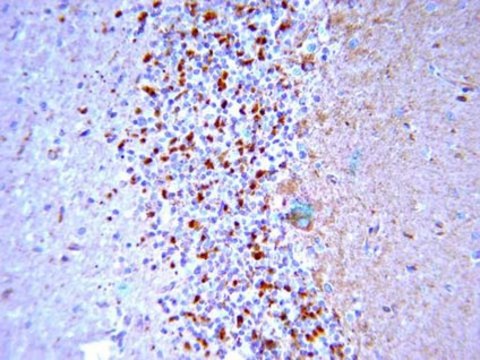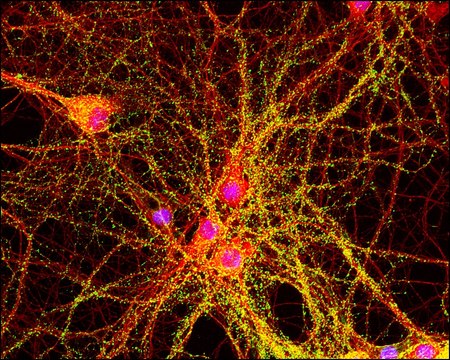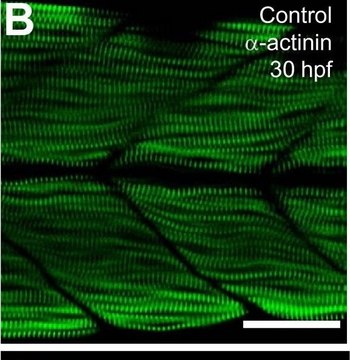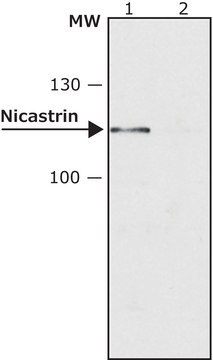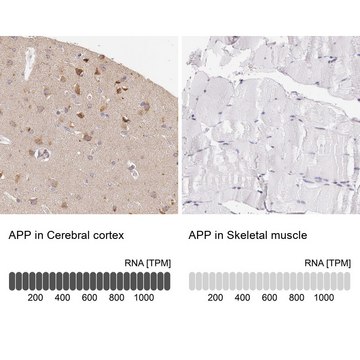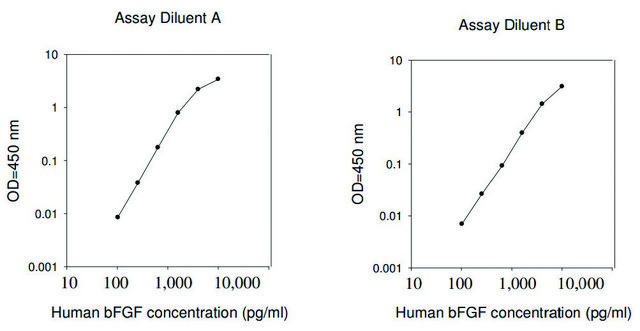推荐产品
生物来源
rabbit
质量水平
抗体形式
affinity purified immunoglobulin
抗体产品类型
primary antibodies
克隆
polyclonal
纯化方式
affinity chromatography
种属反应性
human, mouse, rat
制造商/商品名称
Chemicon®
技术
immunocytochemistry: suitable
immunohistochemistry: suitable
western blot: suitable
NCBI登记号
UniProt登记号
运输
dry ice
靶向翻译后修饰
unmodified
基因信息
human ... SBNO1(55206)
特异性
Recognizes PAS orphan MOP3. The calculated molecular weight is ~68.8 kDa.
免疫原
Synthetic peptide corresponding to amino acids 257-272 of human MOP3. (SVKVEDKDFPSTCSKK).
应用
Anti-MOP3 Antibody detects level of MOP3 & has been published & validated for use in WB, IC, IH.
Research Category
Neuroscience
Neuroscience
Research Sub Category
Circadian Rhythm & Sleep
Circadian Rhythm & Sleep
Western Blot, Immunohistochemistry, Immunocytochemistry.
Recommended dilution 1/200 to 1/1000.
Optimal dilutions must be determined by the user.
Recommended dilution 1/200 to 1/1000.
Optimal dilutions must be determined by the user.
外形
Affinity purified immunoglobulin precipitated in a solution of 50% saturated ammonium sulfate and PBS containing no preservatives.
储存及稳定性
Maintain unopened vial at -20°C for up to 6 months. Avoid repeated freeze/thaw cycles.
The rehydrated antibody solutions can be stored undiluted at 2-8°C for 2 months without any significant loss of activity. Note, the solution is not sterile, thus care should be taken if product is stored at 2-8°C.
For storage at -20°C, the addition of an equal volume of glycerol can be used, however, it is recommended that ACS grade or higher glycerol be used, as significant loss of activity can occur if the glycerol used is not of high quality.
For freezing, it is recommended that the rehydrated antibody solution be further diluted 1:1 with a 2% BSA (fraction V, highest-grade available) solution made with the rehydration buffer. The resulting 1% BSA/antibody solution can be aliquoted and stored frozen at -70°C for up to 6 months. Avoid repeated freeze/thaw cycles.
PREPARATION AND USE:
To reconstitute the antibody, centrifuge the antibody vial at moderate speed (5,000 rpm) for 5 minutes to pellet the precipitated antibody product. Carefully remove the ammonium sulfate/PBS buffer solution and discard. It is not necessary to remove all of the ammonium sulfate/PBS solution: 10 μL of residual ammonium sulfate solution will not effect the resuspension of the antibody. Do not let the protein pellet dry, as severe loss of antibody reactivity can occur.
Resuspend the antibody pellet in any suitable biological buffer, standard PBS or TBS (pH 7.3-7.5) are typical. Volumes required are not critical but it is suggested that the final antibody concentration be between 0.1 mg/mL and 1.0 mg/mL. For example, to achieve a1 mg/mL concentration with 50 μg of precipitated antibody, the amount of buffer needed would be 50 μL.
Carefully add the liquid buffer to the pellet. DO NOT VORTEX. Mix by gentle stirring with a wide pipet tip or gentle finger-tapping. Let the precipitated antibody rehydrate for 1 hour at 4-25°C prior to use. Small particles of precipitated antibody that fail to resuspend are normal. Vials are overfilled to compensate for any losses.
The rehydrated antibody solutions can be stored undiluted at 2-8°C for 2 months without any significant loss of activity. Note, the solution is not sterile, thus care should be taken if product is stored at 2-8°C.
For storage at -20°C, the addition of an equal volume of glycerol can be used, however, it is recommended that ACS grade or higher glycerol be used, as significant loss of activity can occur if the glycerol used is not of high quality.
For freezing, it is recommended that the rehydrated antibody solution be further diluted 1:1 with a 2% BSA (fraction V, highest-grade available) solution made with the rehydration buffer. The resulting 1% BSA/antibody solution can be aliquoted and stored frozen at -70°C for up to 6 months. Avoid repeated freeze/thaw cycles.
PREPARATION AND USE:
To reconstitute the antibody, centrifuge the antibody vial at moderate speed (5,000 rpm) for 5 minutes to pellet the precipitated antibody product. Carefully remove the ammonium sulfate/PBS buffer solution and discard. It is not necessary to remove all of the ammonium sulfate/PBS solution: 10 μL of residual ammonium sulfate solution will not effect the resuspension of the antibody. Do not let the protein pellet dry, as severe loss of antibody reactivity can occur.
Resuspend the antibody pellet in any suitable biological buffer, standard PBS or TBS (pH 7.3-7.5) are typical. Volumes required are not critical but it is suggested that the final antibody concentration be between 0.1 mg/mL and 1.0 mg/mL. For example, to achieve a1 mg/mL concentration with 50 μg of precipitated antibody, the amount of buffer needed would be 50 μL.
Carefully add the liquid buffer to the pellet. DO NOT VORTEX. Mix by gentle stirring with a wide pipet tip or gentle finger-tapping. Let the precipitated antibody rehydrate for 1 hour at 4-25°C prior to use. Small particles of precipitated antibody that fail to resuspend are normal. Vials are overfilled to compensate for any losses.
法律信息
CHEMICON is a registered trademark of Merck KGaA, Darmstadt, Germany
免责声明
Unless otherwise stated in our catalog or other company documentation accompanying the product(s), our products are intended for research use only and are not to be used for any other purpose, which includes but is not limited to, unauthorized commercial uses, in vitro diagnostic uses, ex vivo or in vivo therapeutic uses or any type of consumption or application to humans or animals.
未找到合适的产品?
试试我们的产品选型工具.
储存分类代码
12 - Non Combustible Liquids
WGK
WGK 2
闪点(°F)
Not applicable
闪点(°C)
Not applicable
Circadian timekeeping is disturbed in rheumatoid arthritis at molecular level.
Kouri, VP; Olkkonen, J; Kaivosoja, E; Ainola, M; Juhila, J; Hovatta, I; Konttinen, YT; Mandelin, J
Testing null
Kaitlin H Snider et al.
Behavioural brain research, 308, 222-235 (2016-04-20)
A large body of literature has shown that the disruption of circadian clock timing has profound effects on mood, memory and complex thinking. Central to this time keeping process is the master circadian pacemaker located within the suprachiasmatic nucleus (SCN).
Tongyu Li et al.
EBioMedicine, 39, 301-314 (2018-12-07)
Rhythm abnormalities are crucial for diverse diseases. However, their role in disease progression induced by Helicobacter pylori (H. pylori) remains elusive. H. pylori infection was used in in vivo and in vitro experiments to examine its effect on rhythmic genes.
我们的科学家团队拥有各种研究领域经验,包括生命科学、材料科学、化学合成、色谱、分析及许多其他领域.
联系技术服务部门
